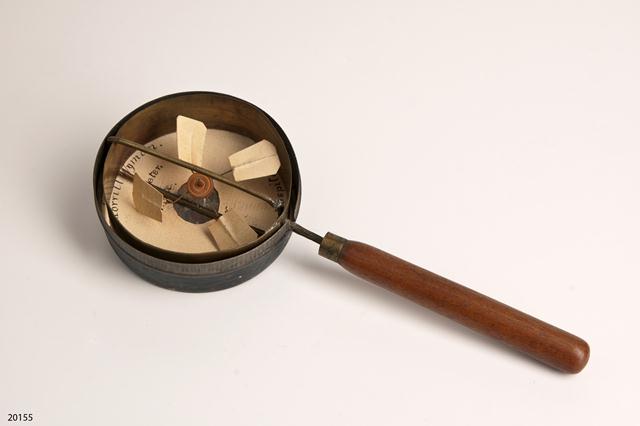
An unusual device built by HMS alumnus Morrill Wyman (1812-1903) is depicted in the Winter 2015 edition of Harvard Medicine Magazine. The device is an airmeter or anemometer, and it was designed by Wyman to register air flow and speed. The device has four paper fan blades set in an open metal circular frame. It has a wooden handle so it could be held up to air vents.
Wyman’s Medical Background
Wyman was a pioneer in recognizing the health consequences of poor ventilation in hospitals and public buildings. In 1846, he won the Boylston Medical prize for an essay on the subject, which he then expanded to a 400-page text entitled A Practical Treatise on Ventilation. Wyman published a paper on the health effects of various outlet cowls for chimneys for the American Academy of Arts and Sciences two years later. As befitted his expertise, he served on an inspection committee of army medical facilities during the American Civil War.
Dr. Wyman had a lifelong dedication to Cambridge Hospital (now Mount Auburn Hospital). He served as its president from 1874 to 1892, and was instrumental in the design of the hospital’s physical plant. His particular interest was a novel and elaborate heating and ventilation system. Venting to the outside was conducted through a main chimney linked to vents placed beneath each bed. It was reported that approximately 2,000 cubic feet of air was drawn from the hospital each hour by the system. Towards the end of his career, Wyman would stop by the hospital on his way home from seeing patients to check on the ventilation system. Accounts had him checking the vents with his airmeter just several weeks before his death at 90.
In addition to the airmeter, the Center for the History of Medicine has an architect’s drawing, circa 1903, of the proposed Harvard Medical School quad.
This news post was originally published on the Center for the History of Medicine’s Wordpress site.